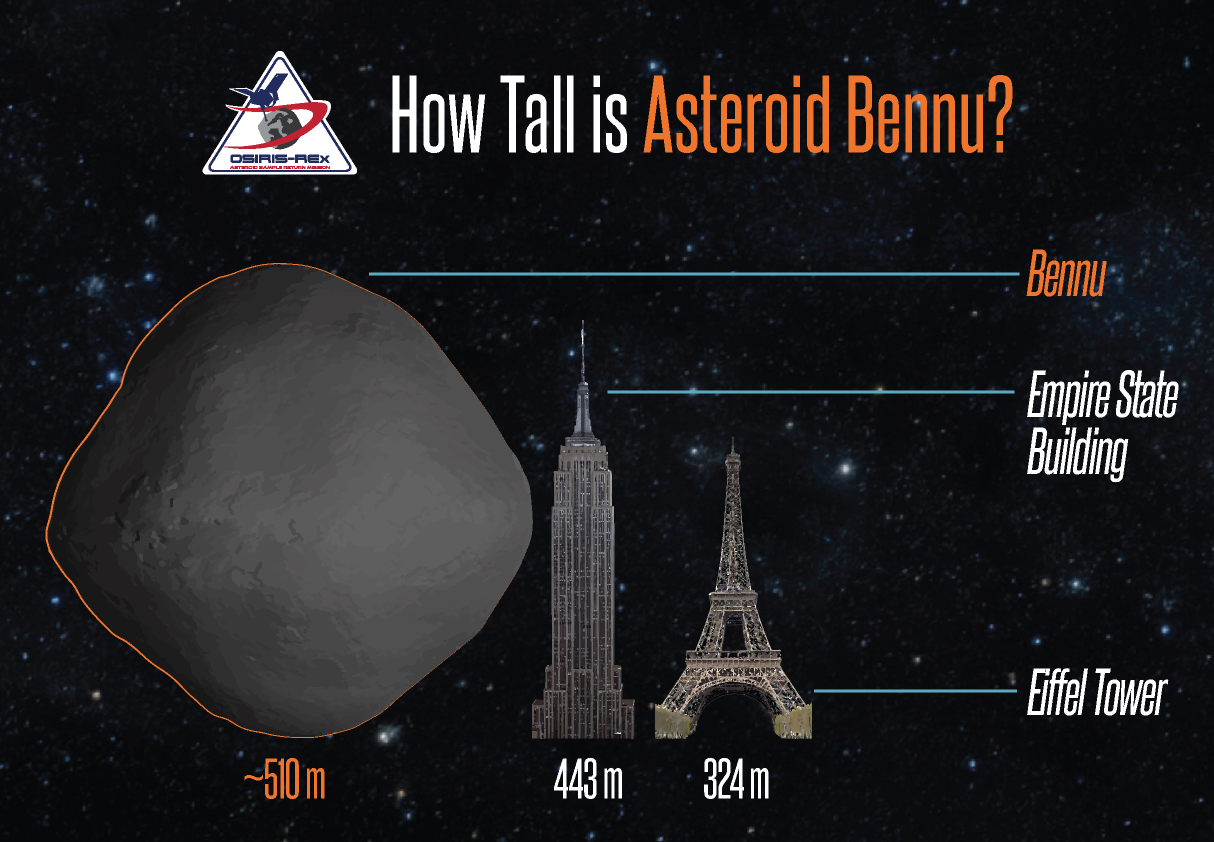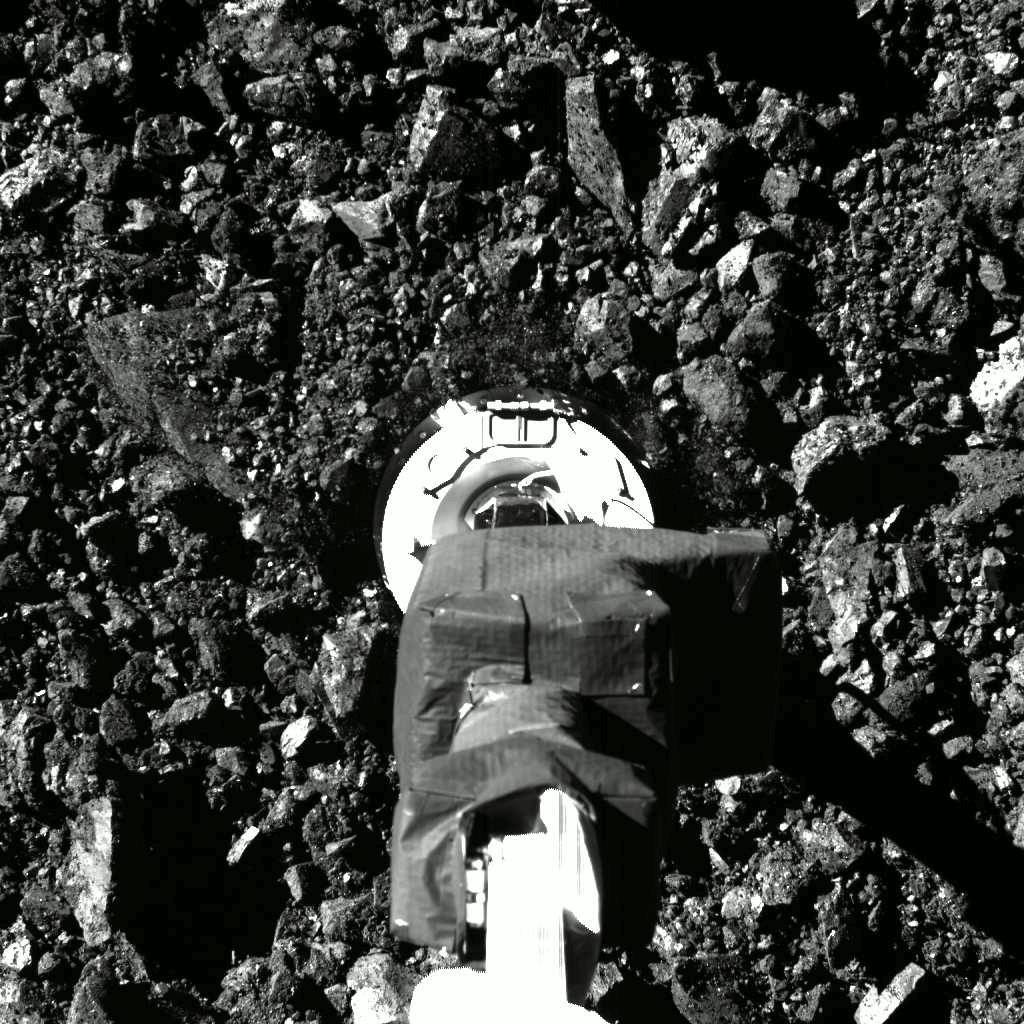
For SpaceUpClose.com & RocketSTEM
KENNEDY SPACE CENTER, FL – After a journey of over 200 million miles (321 million km) from Earth NASA’s daring OSIRIS-REx mission touched and sampleg Asteroid Bennu for six seconds with its pogo stick like TAGSAM robotic arm exactly as planned with incredible precision on Oct. 20 and successfully collected NASA’s first ever samples of asteroidal dust and pebbles from the surface for delivery to Earth in 2023.
NASA released imagery (see above and below) captured on Oct. 20, 2020 during the OSIRIS-REx mission’s Touch-And-Go (TAG) sample collection event at the targeted Nightingale sample collection site that took place with incredible precision.
The new series of images taken by the vessels SamCam imager shows the field of view as OSIRIS-REx spacecraft approaches and touches down on asteroid Bennu’s surface heretofore untouched surface.
The sampling event brought the spacecraft all the way down to sample site Nightingale, touching down within three feet (one meter) of the targeted location – on a tiny celestial body only 510 meters wide and only slightly taller than the Empire State Building in NYC.
It rapidly fired the nitrogen canister into the surface to disturb soil upwards for collection by the TAGSAM robotic arm device and fired thrusters to complete the back away burn to ensure the spacecrafts safe departure.
“The team on Earth received confirmation at 6:08 p.m. EDT that successful touchdown occurred. Preliminary data show the one-foot-wide (0.3-meter-wide) sampling head touched Bennu’s surface for approximately 6 seconds, after which the spacecraft performed a back-away burn,” said NASA.
Video Caption: Captured on Oct. 20, during the OSIRIS-REx mission’s Touch-And-Go (TAG) sample collection event, this series of 82 images shows the SamCam imager’s field of view as the NASA spacecraft approaches and touches down on asteroid Bennu’s surface. The sampling event brought the spacecraft all the way down to sample site Nightingale, and the team on Earth received confirmation of successful touchdown at 6:08 p.m. EDT. Preliminary data show the sampling head touched Bennu’s surface for approximately 6 seconds, after which the spacecraft performed a back-away burn. Credits: NASA/Goddard/University of Arizona
“The spacecraft’s sampling arm – called the Touch-And-Go Sample Acquisition Mechanism (TAGSAM) – is visible in the lower part of the frame. The round head at the end of TAGSAM is the only part of OSIRIS-REx that contacted the surface during the sample collection event. In the middle of the image sequence, the sampling head positions itself to contact the asteroid’s surface head-on. Shortly after, the sampling head impacts site Nightingale and penetrates Bennu’s regolith. Upon initial contact, the TAGSAM head appears to crush some of the porous rocks underneath it. One second later, the spacecraft fires a nitrogen gas bottle, which mobilizes a substantial amount of the sample site’s material. Preliminary data show the spacecraft spent approximately 5 of the 6 seconds of contact collecting surface material, and the majority of sample collection occurred within the first 3 seconds.”
“Well, I definitely touched down on Bennu! Preliminary data show the sampling head touched Bennu’s surface for approximately 6 seconds, within 3 feet (1 meter) of the targeted location. #ToBennuAndBack,” the spacecraft/team tweeted with this video:
Well, I definitely touched down on Bennu!
Preliminary data show the sampling head touched Bennu’s surface for approximately 6 seconds, within 3 feet (1 meter) of the targeted location. #ToBennuAndBack
More details: https://t.co/4rBrB27FEZ pic.twitter.com/LjDQICmxJM
— NASA's OSIRIS-REx (@OSIRISREx) October 21, 2020
The entire touch and go sampling procedure was accomplished autonomously with no real time intervention possible because of the lengthy 18 minute radio signal communications delays
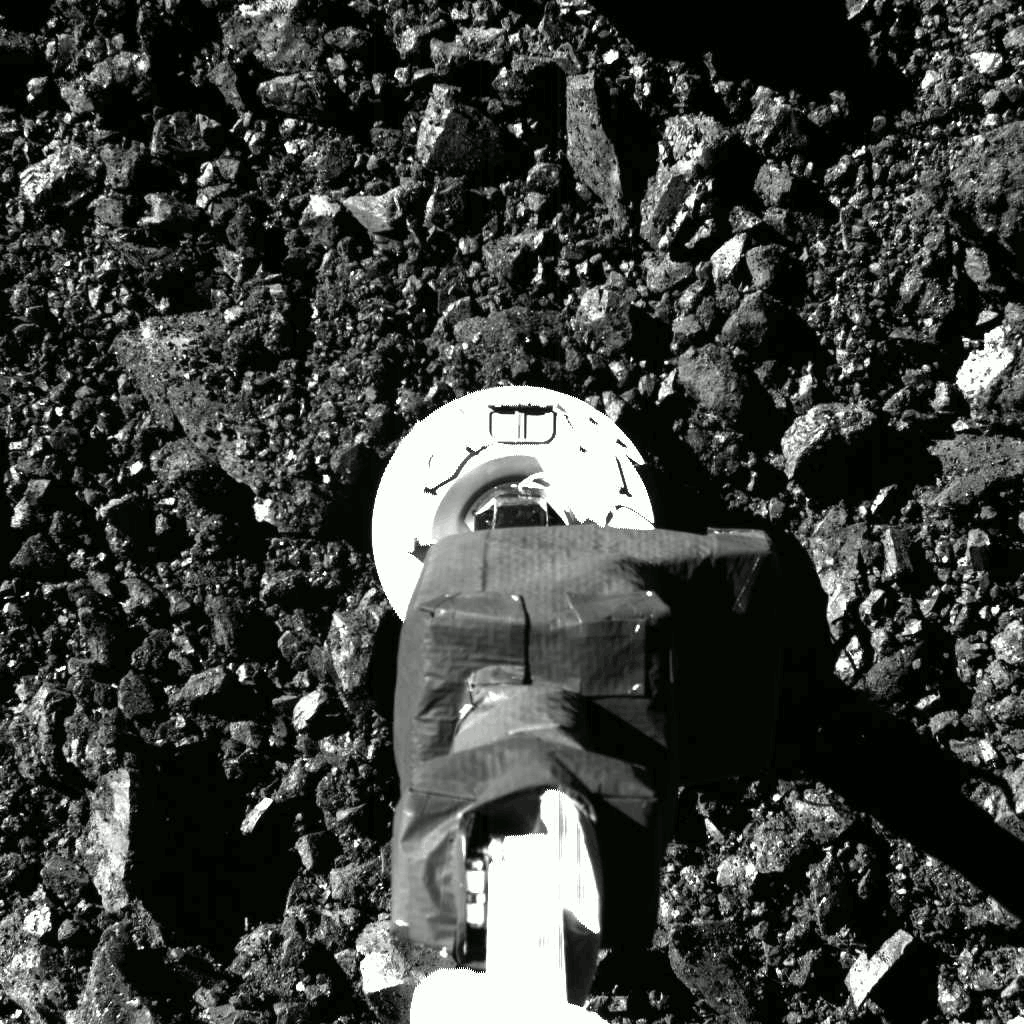
This is NASA’s first asteroid sample retrieval mission and takes place about 200 million miles from Earth on a carbon rich Near Earth Asteroid collecting pristine soil and rock samples dating back to the origin of the solar system 4.5 Billion years ago and perhaps gives clues to the origin of life on Earth as well.
The team also released an image showing the preliminary conclusion on its touchdown/sampling site inside Nightingale
“Preliminary telemetry shows this is where I touched down on site Nightingale – within 3 feet (1 meter) of the targeted location. Not too bad for being 200 million miles away,” the spacecraft/team tweeted with this image:
Preliminary telemetry shows this is where I touched down on site Nightingale – within 3 feet (1 meter) of the targeted location 🎯
Not too bad for being 200 million miles away 😎 pic.twitter.com/IHr621kmc6
— NASA's OSIRIS-REx (@OSIRISREx) October 21, 2020
OSIRIS-REx arrived in orbit 2 years ago for detailed science imaging, spectroscopy, analysis and site selection at the asteroid located more than 200 million miles (321 million kilometers) from Earth.
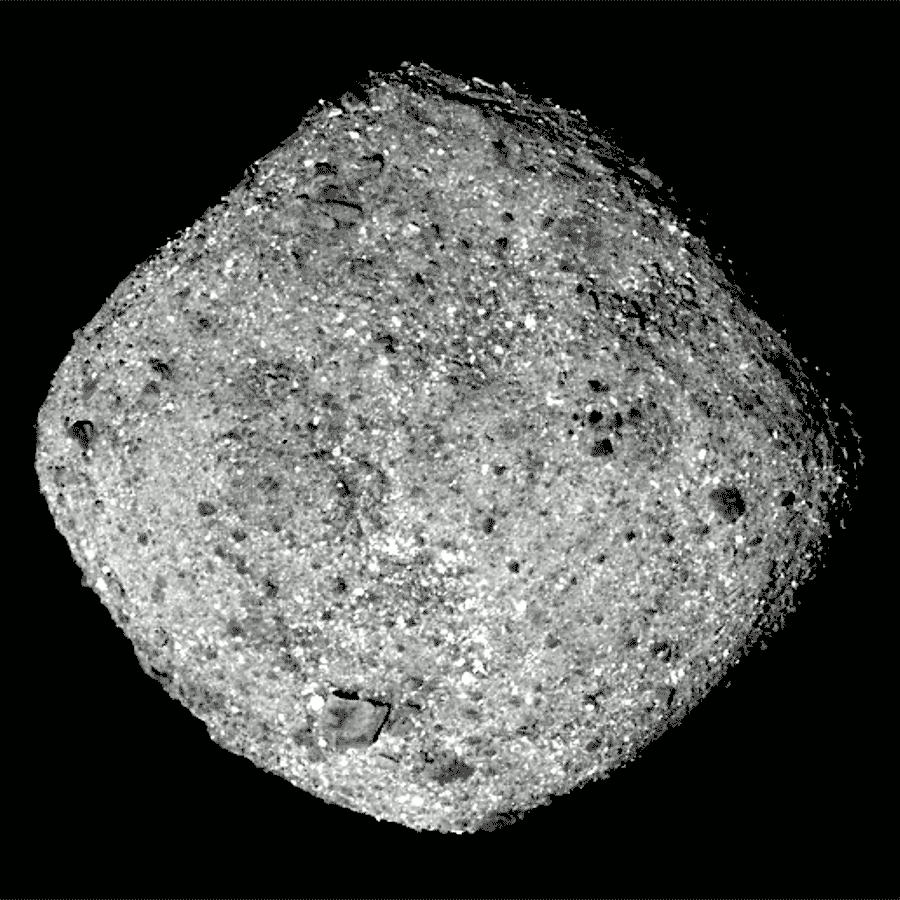
Overall the OSIRIS-REx mission involves an unprecedented 7 year science journey to Bennu and back to collect at least 60 grams of asteroidal material.
Bennu has an active surface and is and ejecting material
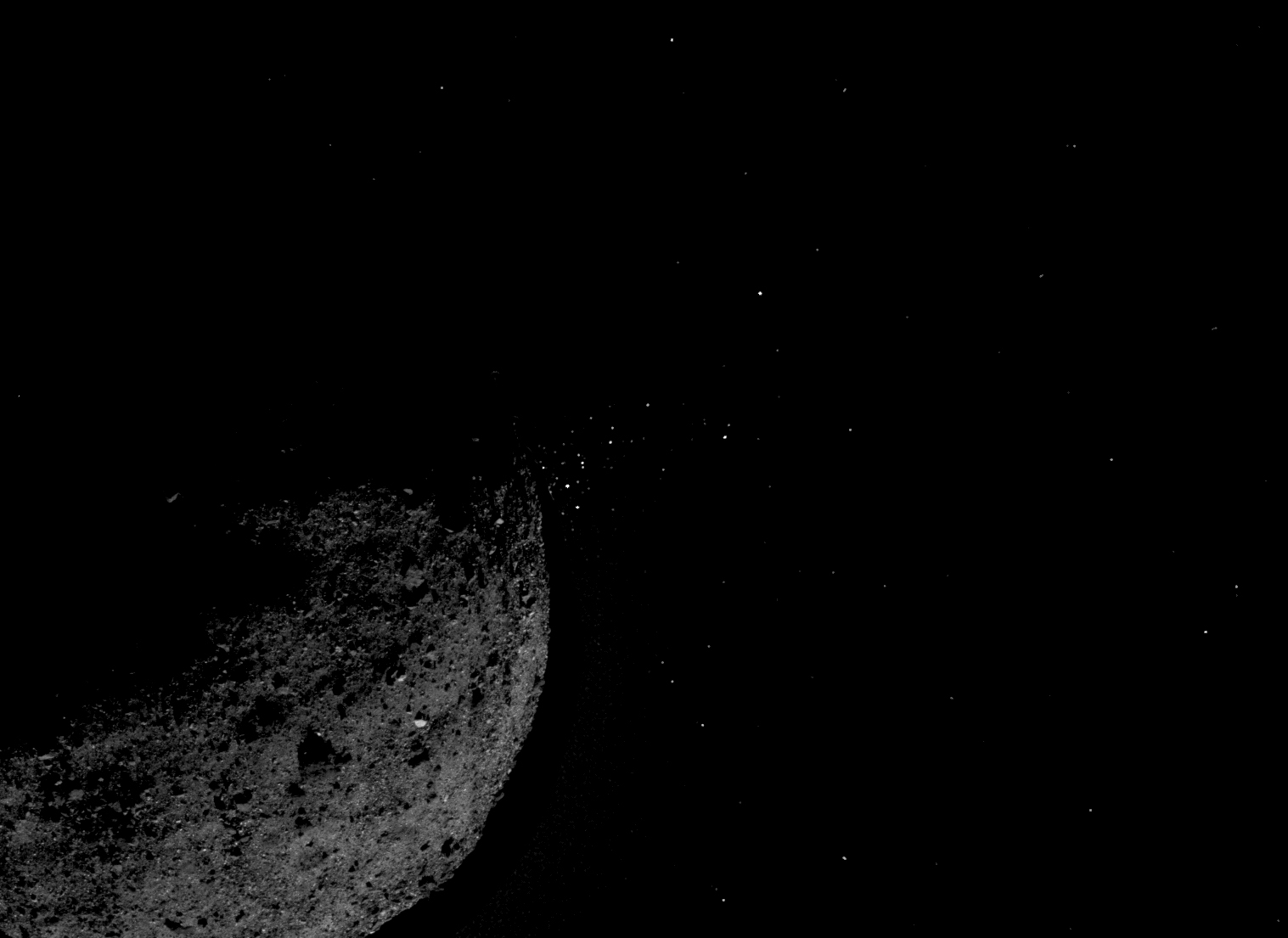
The spacecraft has extensively surveyed the asteroid before the mission team selected two possible sample sites. Close examination of these sites allow the team to pick one for sample collection. After sample collection, the spacecraft will head back toward Earth before ejecting the Sample Return Capsule for landing in the Utah desert in Sept. 2023.
OSIRIS-Rex was launched on Sept. 8, 2016 on a United Launch Alliance Atlas V rocket from Cape Canaveral Air Force Station, FL.
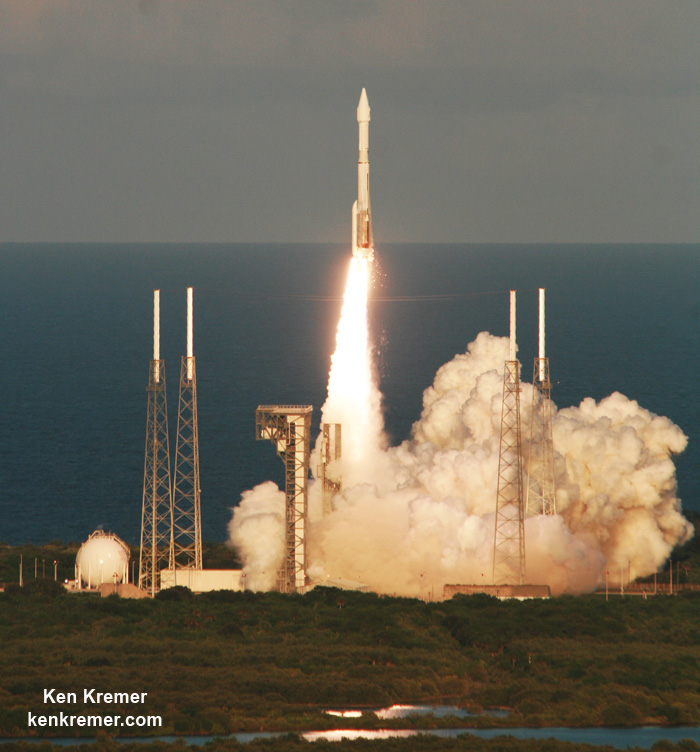
OSIRIS-Rex counts as NASA’s first mission to visit a near-Earth asteroid, survey the surface, collect a sample and deliver it safely back to Earth.
Watch my commentary at WFTV Ch 9 ABC News Orlando on NASA’s successful OSIRIS-Rex mission landing and sampling at asteroid Bennu featured on Oct 22/23:
Watch Ken’s continuing reports about OSIRIS-REx, Commercial Crew and Artemis and onsite for live reporting of upcoming and recent SpaceX and ULA launches including Demo-2, Starlink, X-37B, Solar Orbiter, Mars 2020 and more at the Kennedy Space Center and Cape Canaveral Space Force Station.
Stay tuned here for Ken’s continuing Earth and Planetary science and human spaceflight news: www.kenkremer.com –www.spaceupclose.com – twitter @ken_kremer – email: ken at kenkremer.com
Dr. Kremer is a research scientist and journalist based in the KSC area, active in outreach and interviewed regularly on TV and radio about space topics.
………….
Ken’s photos are for sale and he is available for lectures and outreach events
Please consider supporting Ken’s work by donating at Patreon:
https://www.patreon.com/kenkremer
